Last Updated on February 22, 2024 by Grant
Indiana is home to three National Parks sites: Lincoln Boyhood National Memorial, George Rogers Clark National Historical Park and Indiana Dunes National Park. Despite the fact that the three parks are spread out all over the state, we were able to visit them all on our 2019 summer road trip through the Great Lakes. These three Indiana National Parks are vastly different and each tells a different story.
Located about an hour east of Chicago, Indiana Dunes NP is a great example of the struggle between land preservation and modern industrialization in the 1900s. Further south, George Rogers Clark NHP memorializes Colonel Clark and his efforts during the Revolutionary War in the 1770s. Finally, the Lincoln Boyhood NM preserves the rugged wilderness where Abraham Lincoln lived as a boy in the early 1800s.
Check out our full Great Lakes National Parks itinerary here.
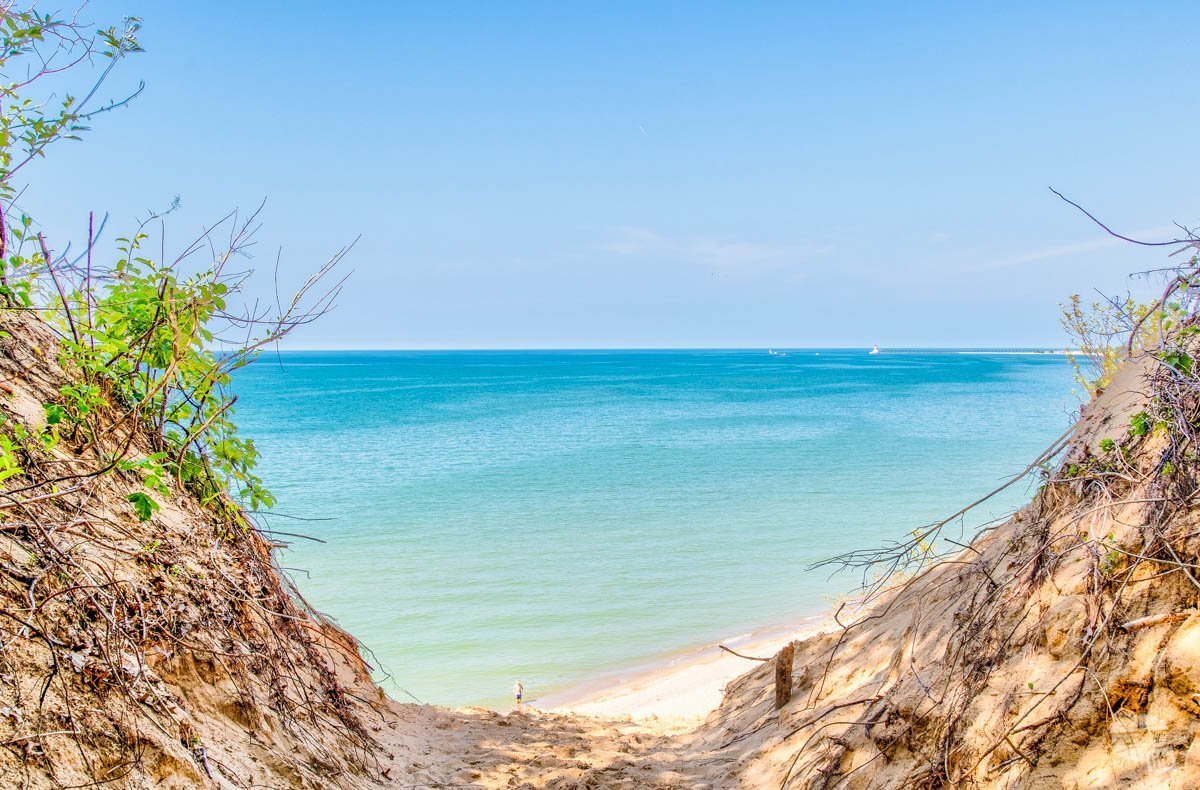
Together, the Indiana National Parks offer snapshots of US history and preserve land for us all to enjoy.
(Disclaimer: When we link to places where you can buy our stuff or places we stayed, we are using special codes that earn us commissions on the sales at no additional cost to you. Please see our Review Policy for more information.)
Indiana Dunes National Park
As the only park with the “National Park” designation in Indiana, you may think that this park is more important than the others. It’s not. In fact, of the three this might be my least favorite, if I’m being honest. When Congress renamed what was originally Indiana Dunes National Lakeshore to a National Park in February 2019 absolutely nothing changed other than the name.
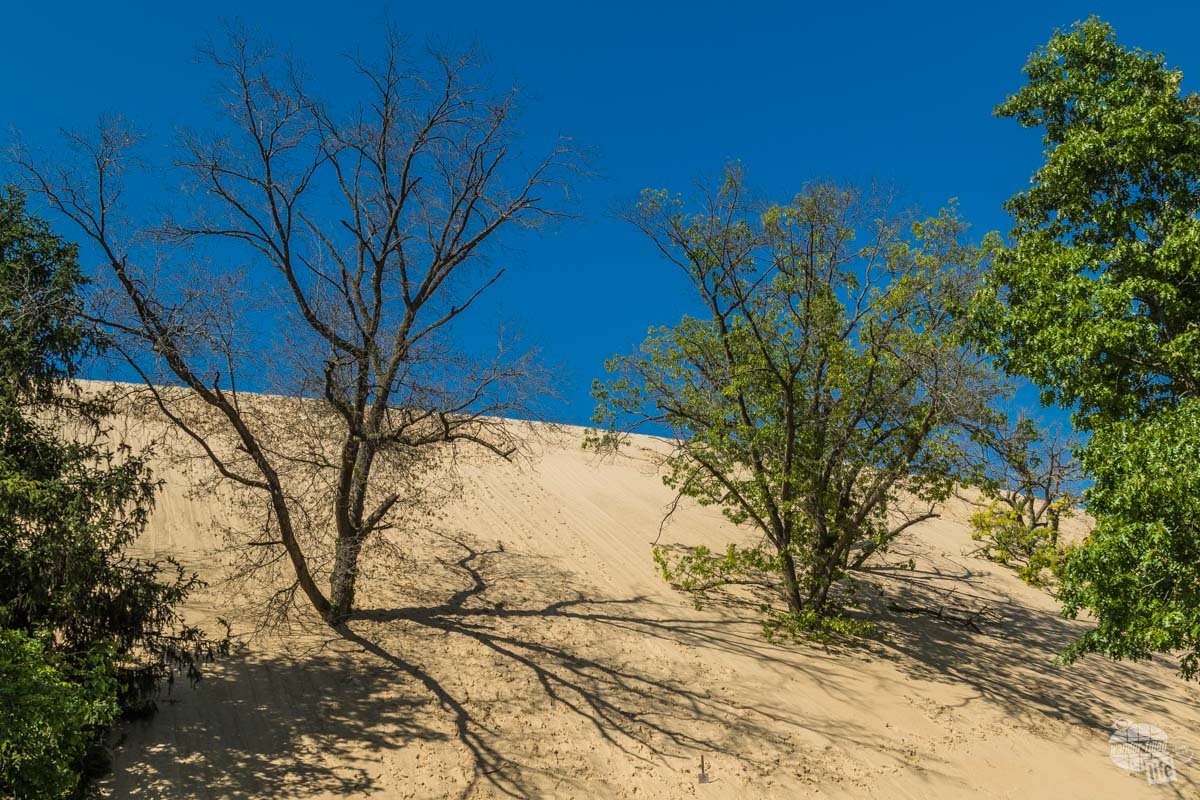
As the Park Superintendent wrote in The Singing Sands (the Indiana Dunes NP newspaper/trip planner), the park’s legal authorities remain the same and there is no budget increase. While the “National Parks” seem to get all the attention, the reality is that all park units are equal. Still, this already most-visited attraction in Indiana will likely get even a few more visitors now.
For the National Park enthusiasts, I must warn you that this park is different from a lot of other National Parks. The park boundaries surround several private neighborhoods and the Port of Indiana. The port includes a steel mill and a power plant. Another power plant stands on the park’s northern border in Michigan City. While visiting Indiana Dunes, this development will be obvious. This really is an urban park, similar to (but also vastly different from) Cuyahoga Valley NP and Hot Springs NP.
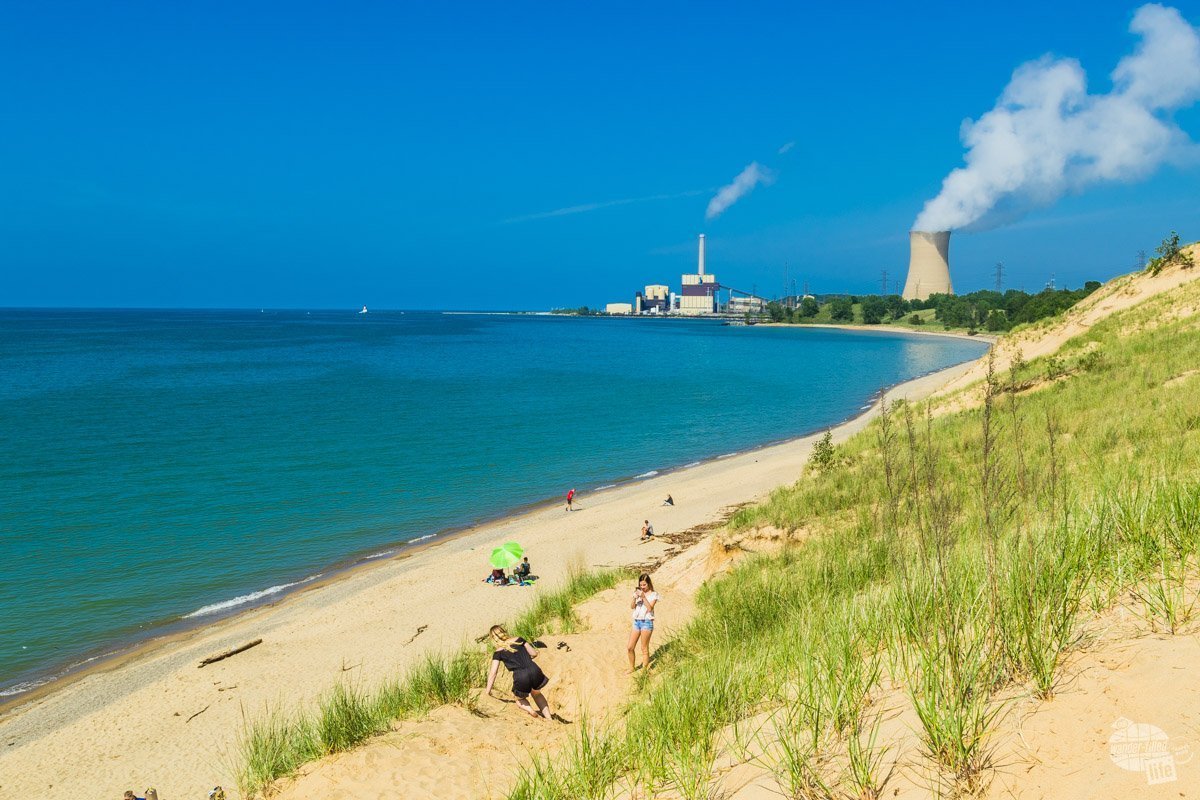
It was this encroachment on the land that first prompted preservation efforts back in 1916. The state created Indiana Dunes State Park (also within the boundaries of the national park) in 1926. Finally, in 1966, Congress created Indiana Dunes National Lakeshore. According to the park brochure, “the deal to protect the dunes also included creating the Port of Indiana.” Just another sign of the politics involved in preserving our national lands. Sigh.
Things to Do at Indiana Dunes NP
Despite the surrounding industrialization, there are still several ways to enjoy the park and its natural beauty. Unless you are looking to spend time on the beach, one day should be enough to experience Indiana Dunes National Park.
Hiking
You will find several hiking trails throughout the park. We chose the Cowles Bog Trail and highly recommend it. The trail wanders through a black oak savanna and past a couple of ponds and marshes out to the dunes and Lake Michigan. Most of the trail is reasonably flat and easy to hike, though the last bit over the dunes is strenuous. You can pick up a free trail map at the Visitor Center.
Check out our 10 essentials for hiking here.
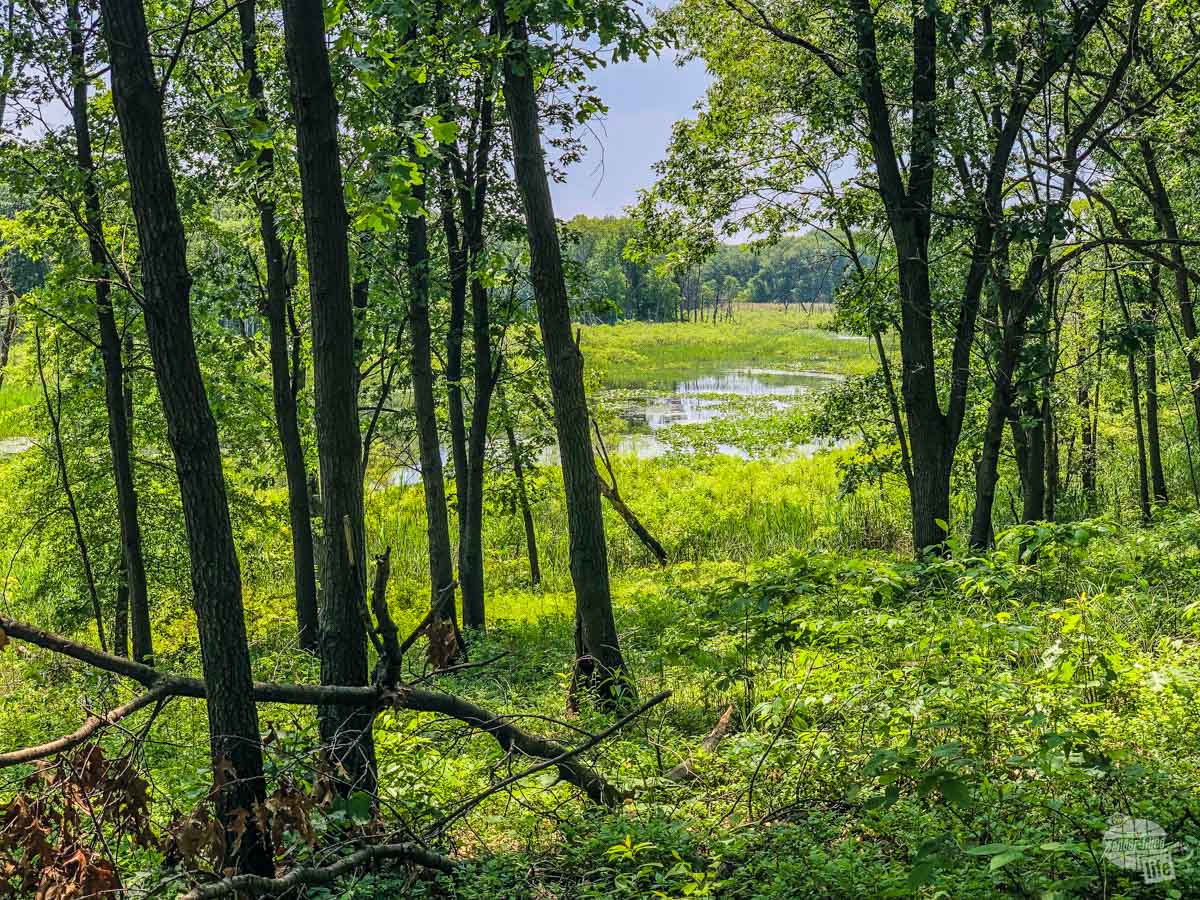
The trail can be done as an out-and-back from a couple of different parking areas or you can hike it as a loop, which is what we did. Our hike was nearly 5 miles, doing a loop from the Greenbelt Trail parking lot (advice from a ranger). From here, we walked under power lines and along the Port of Indiana and National Park boundary. That part of the hike was not pleasant.
Now that we’ve done it, I suggest that you park at the Cowles Bog Trailhead. That part of the trail is much more pleasant and is actually a hike rather than a walk along an old service road. From this parking lot, you could do an out-and-back at just over 3 miles roundtrip. You could add loops to add on another mile or two.
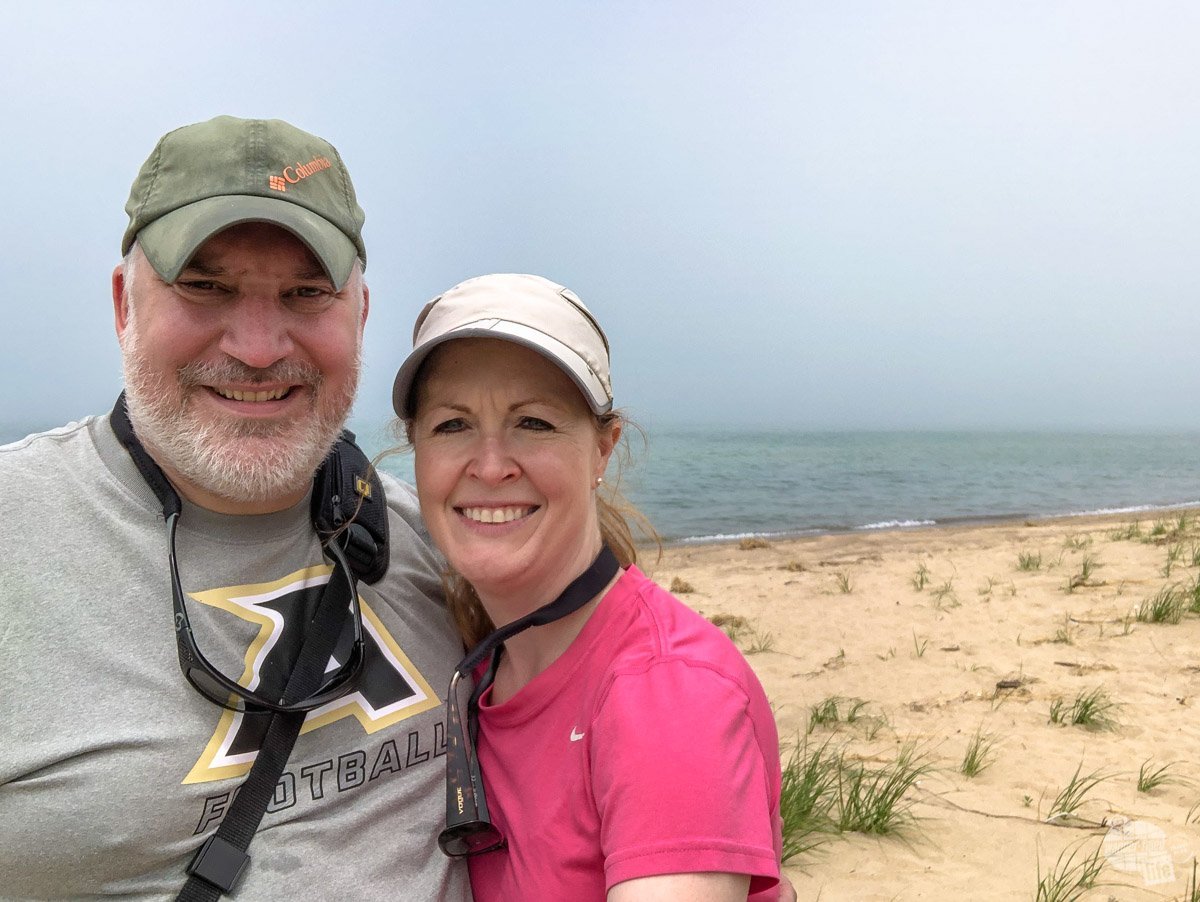
We packed sandwiches and enjoyed lunch on the beach. Unfortunately, not long after we arrived the fog got even worse than it was to begin with, so we didn’t have a great view. Still, we really enjoyed the hike. The only bad part was the strenuous uphill through the sand coming back over the dunes.
Bailly Homestead and Chellberg Farm
For a glimpse into the history of the area, visit Bailly Homestead and Chellberg Farm.
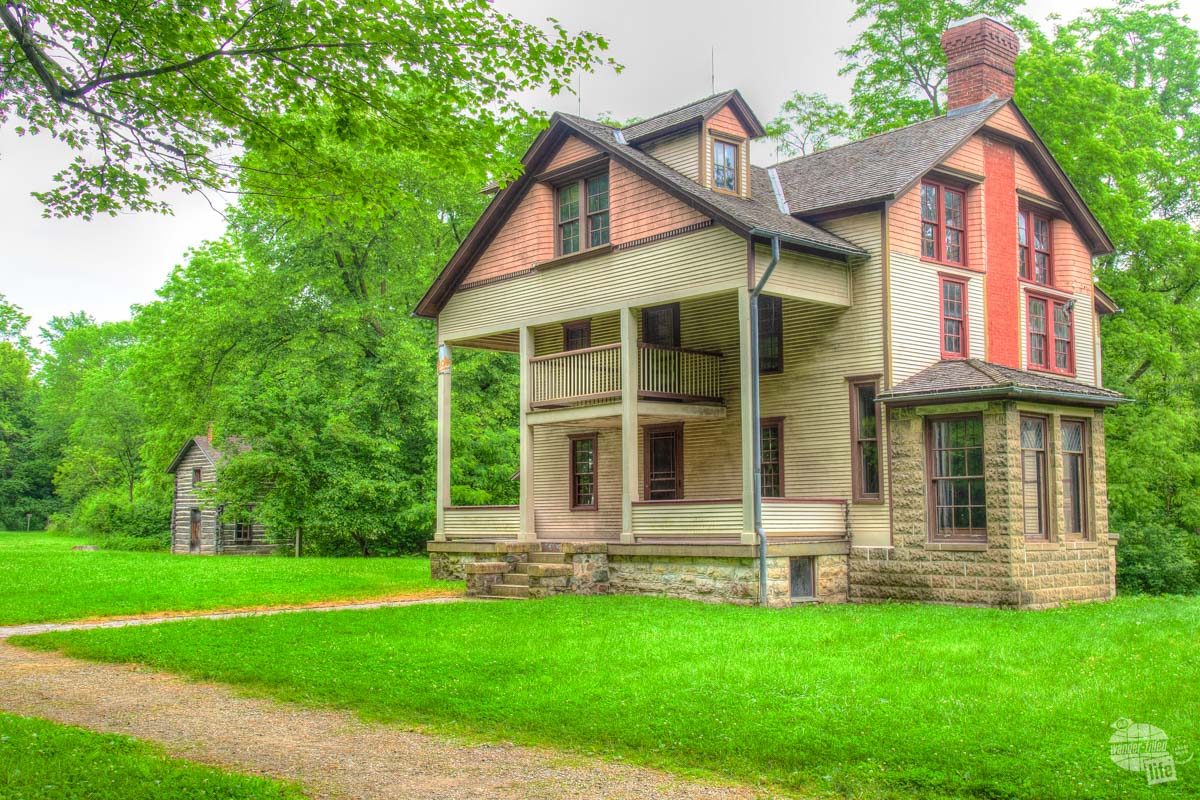
Joseph Bailly and his family were some of the first settlers in this area in 1822. His trading post was one of the first in Northern Indiana. Bailly also counseled the Potawatomi Indians when negotiating the Chicago Treaty. The six original structures of the homestead are preserved, along with a brick house that his granddaughter lived in.
According to the exhibit, “Swedish immigrants played an important role in northwestern Indiana.” The Chellburg Farm belonged to Swedish immigrants who came to the area in the 1860s. The park service restored this farm to its 1900 appearance. It includes the main house, chickens, cows, turkeys, goats and pigs.
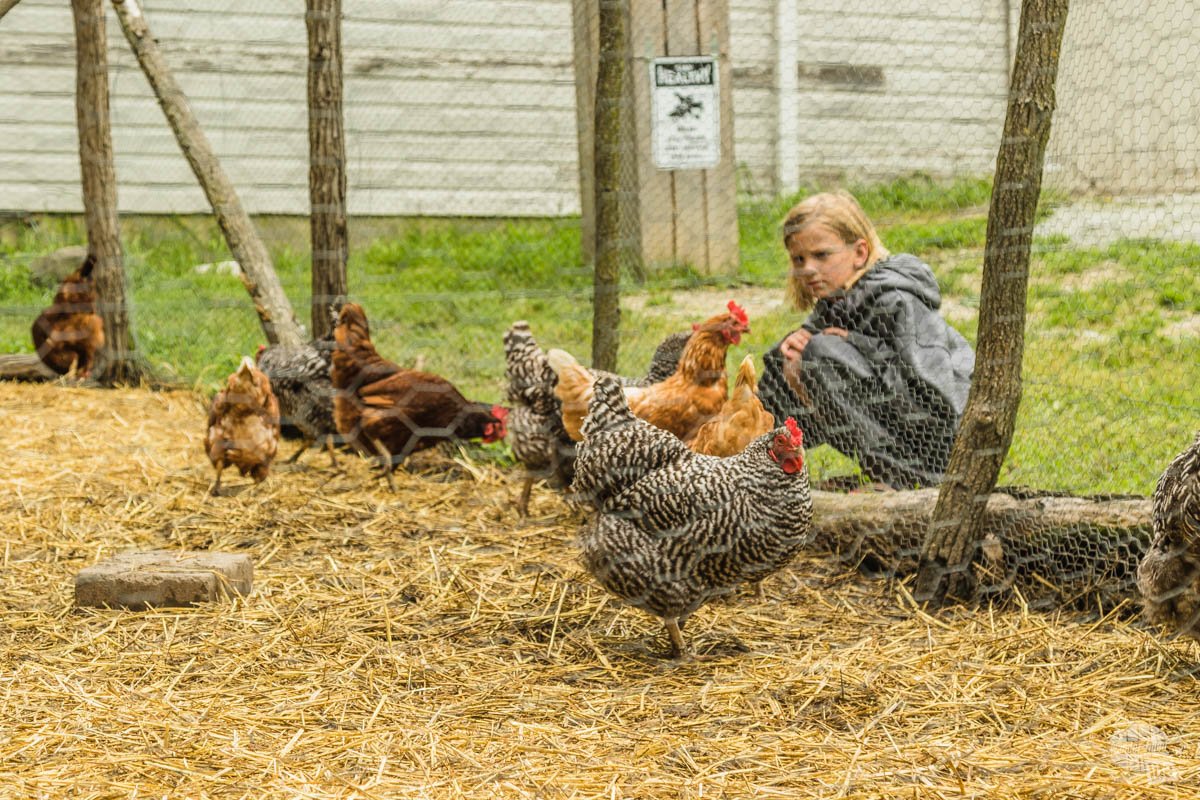
From the parking log, a short trail off to the left takes you to Bailly Homestead; turning right takes you to the Chellberg Farm. We spent a little more than 30 minutes touring this area. Total distance covered was about 1.3 miles on a very easy trail.
Century of Progress Homes
Along Lake Front Drive, on the edge of the private Beverly Shores neighborhood, you’ll find the five Century of Progress homes that were part of the 1933 Chicago World’s Fair. When built, the houses featured modern and innovation materials, appliances and construction techniques.
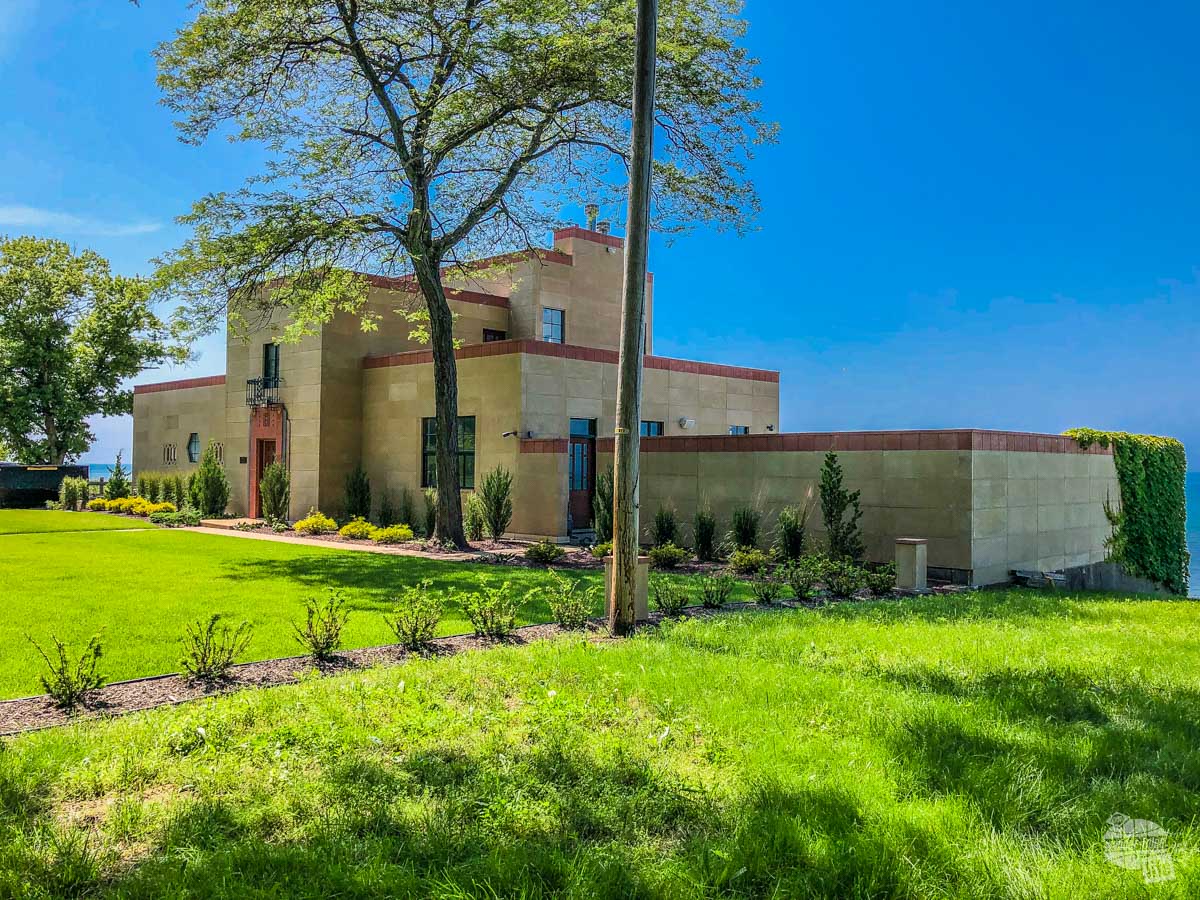
After the World’s Fair, a developer moved the houses here to promote the new resort community of Beverly Shores. Today, the houses are part of a three-way partnership with the National Park Service, Indiana Landmarks and private subleasers for restoration. You can view the exterior of the houses and read roadside exhibits on each of them.
We agreed the “Florida House” with its interior-exterior living was our favorite, despite its flamingo pink color.
The drive along the lakeshore here is nice. Lake View Beach is a great place to access the beach and take a few pictures or hang out.
Indiana Dunes State Park
The state created Indiana Dunes State Park a full 40 years before the US Congress established the National Lakeshore. That is why the National Park boundary surrounds the state park. While there are some nice views within the national lands, I’ll argue that the State Park contains, perhaps, the best dunes in the area.
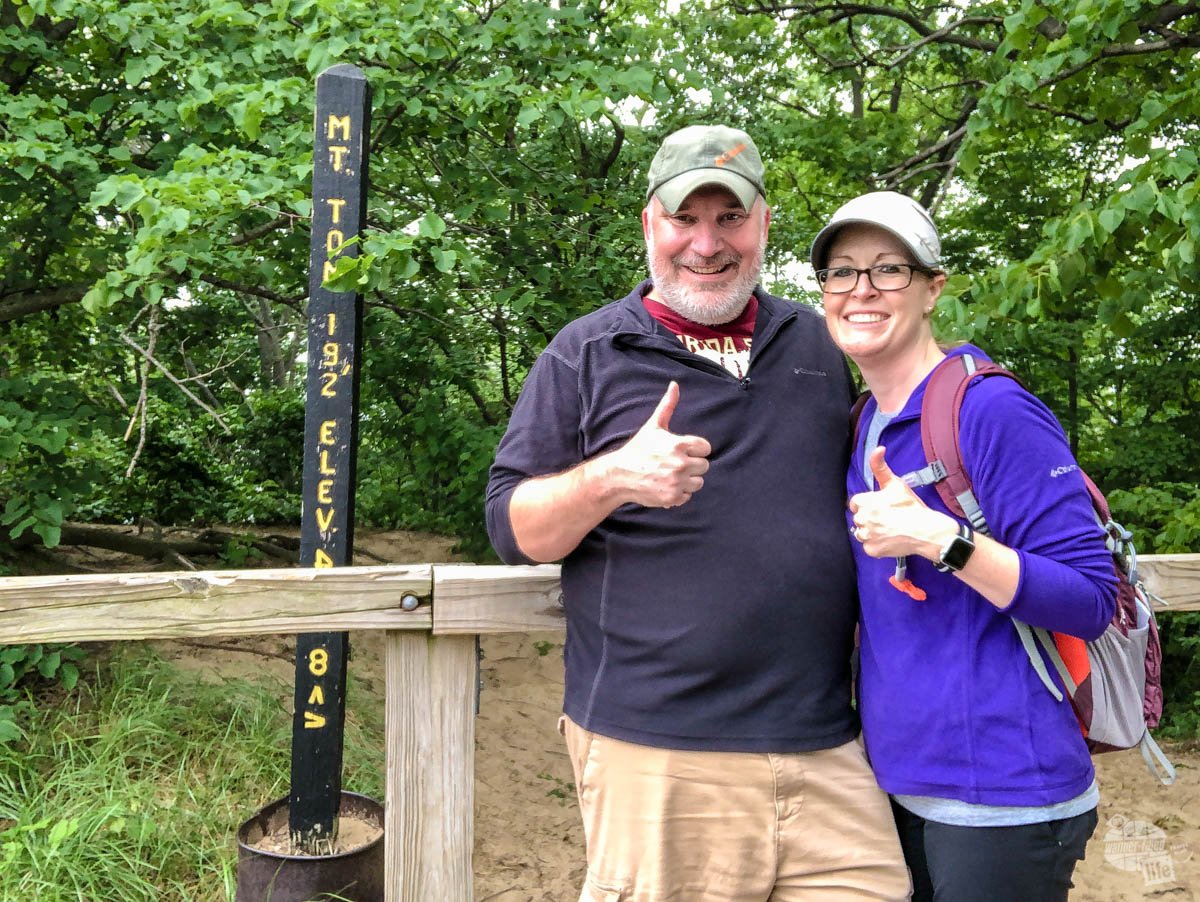
In fact, it is inside the state park that you’ll find the 3 Dune Challenge, a self-guided challenge to hike the three tallest dunes in the park. At only about 1.5 miles, the length isn’t the challenge; it’s the vertical assent… In the sand!
We lucked out and visited during a rainy spell. No, the rain wasn’t fun. But, the rain does pack the sand a bit, which makes it a tad easier to walk on. Don’t get me wrong, hiking up the sand dunes was difficult. Still, I think it was easier than if the sand had been completely dry. Another nice feature is that these are forested dunes, meaning you are not walking through the blazing sun. We always appreciate shade when we’re hiking!
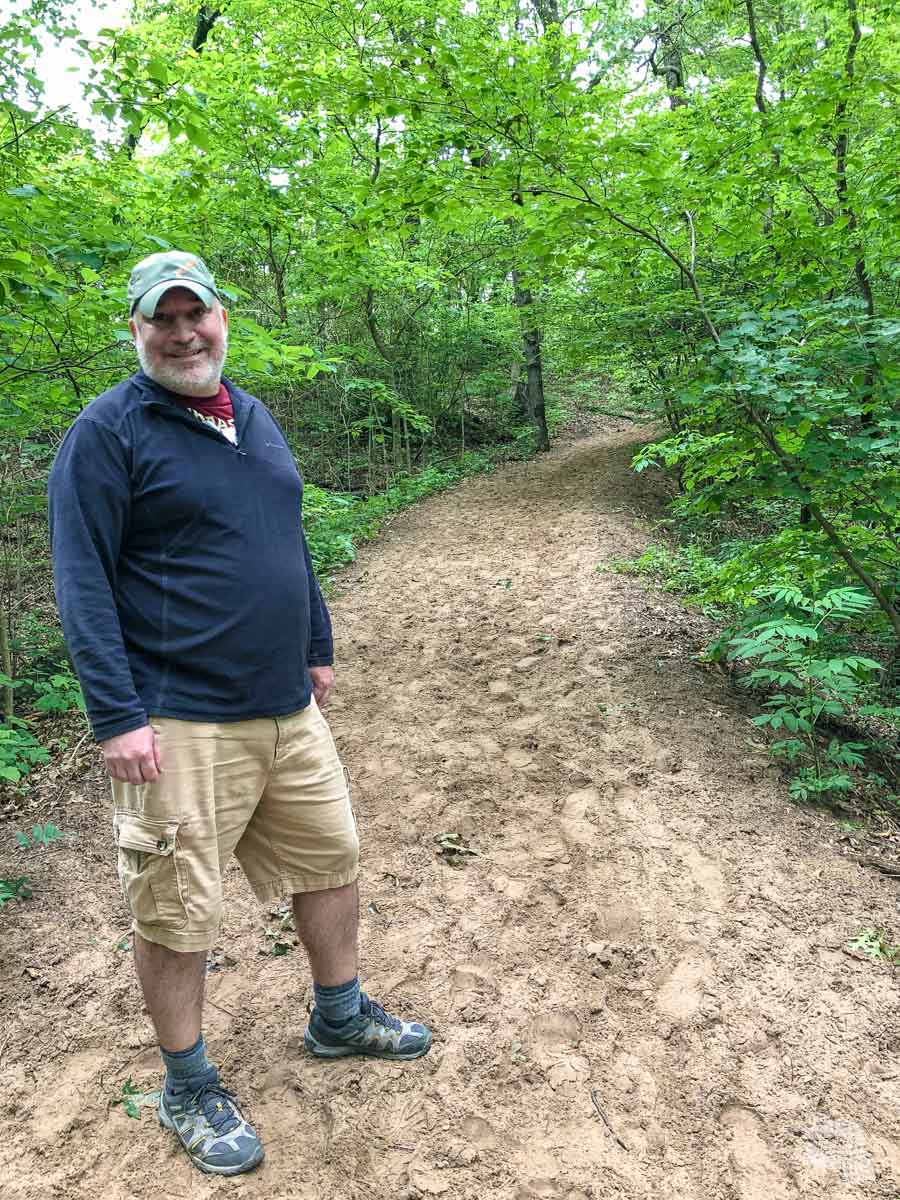
The state park also contains a very nice, easy-to-access beach. Indeed, many of the beaches in the National Park require at least a short walk and/or hike over the dunes.
Where to Stay
We camped at the Indiana Dunes State Park. There are also plenty of options for hotels in Chesteron, Gary and Michigan City, all of which provide easy access to the park.
The campground at Indiana Dunes SP was great, other than the fact that we only had electrical hookups. There are no water or sewer hookups. There is an easy-to-access water filling station as you enter the campground and a dump station as you exit.
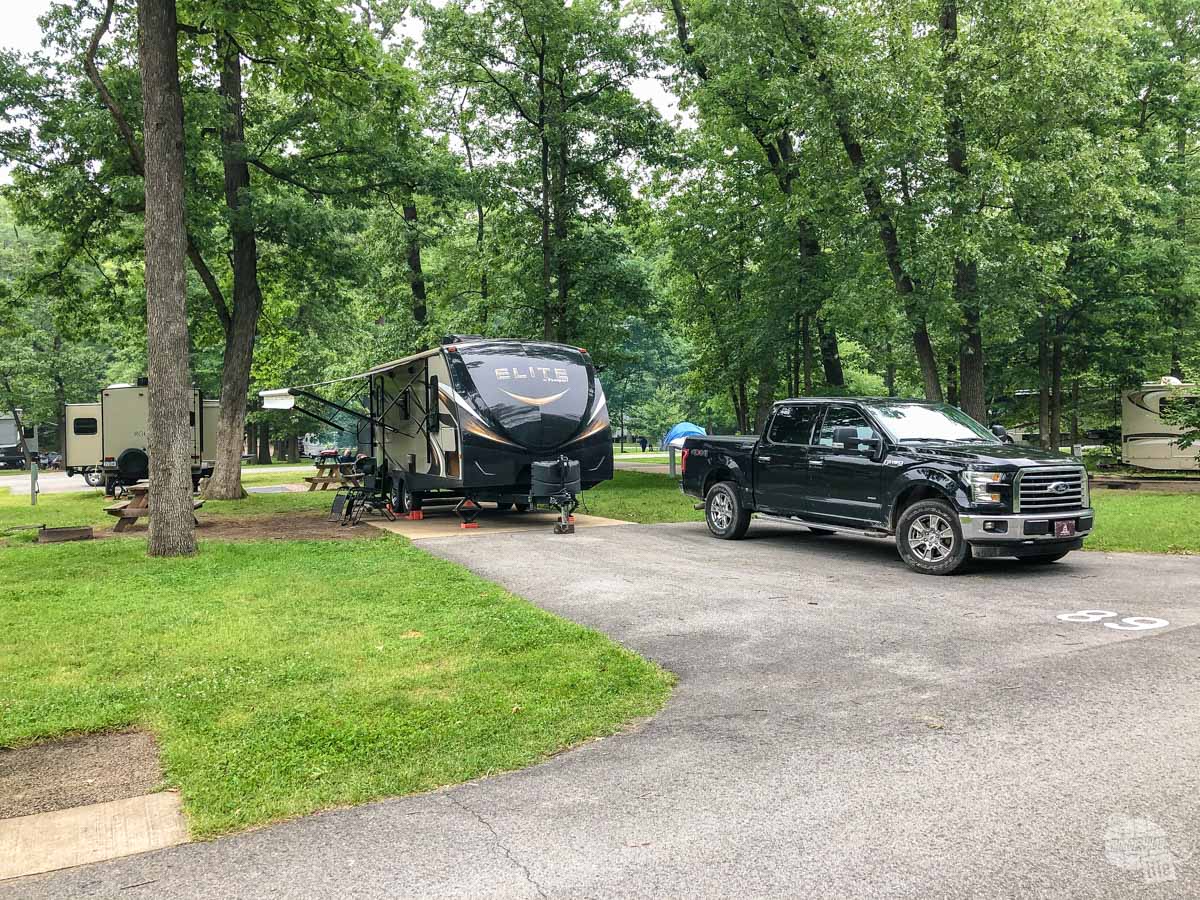
We really enjoyed the campground, which provided paved pads and a large parking area for each site. A large gassy area surrounds each site, providing plenty of space to set up camp, enjoy a campfire or just let the kids play.
Pro tip: Indiana State Parks allow a 5 p.m. check out on Sundays. Just bear that in mind if you are coming in on a Sunday.
Side Trip: George Rogers Clark National Historical Park
Located in Vincennes, along the Wabash River, is the George Rogers Clark National Historical Park. This park is a memorial to Clark, an American colonel during the Revolutionary War. Clark led his American army, with assistance from French residents in the area, to capture Fort Sackville and assure the United States’ claim to the frontier in 1779.
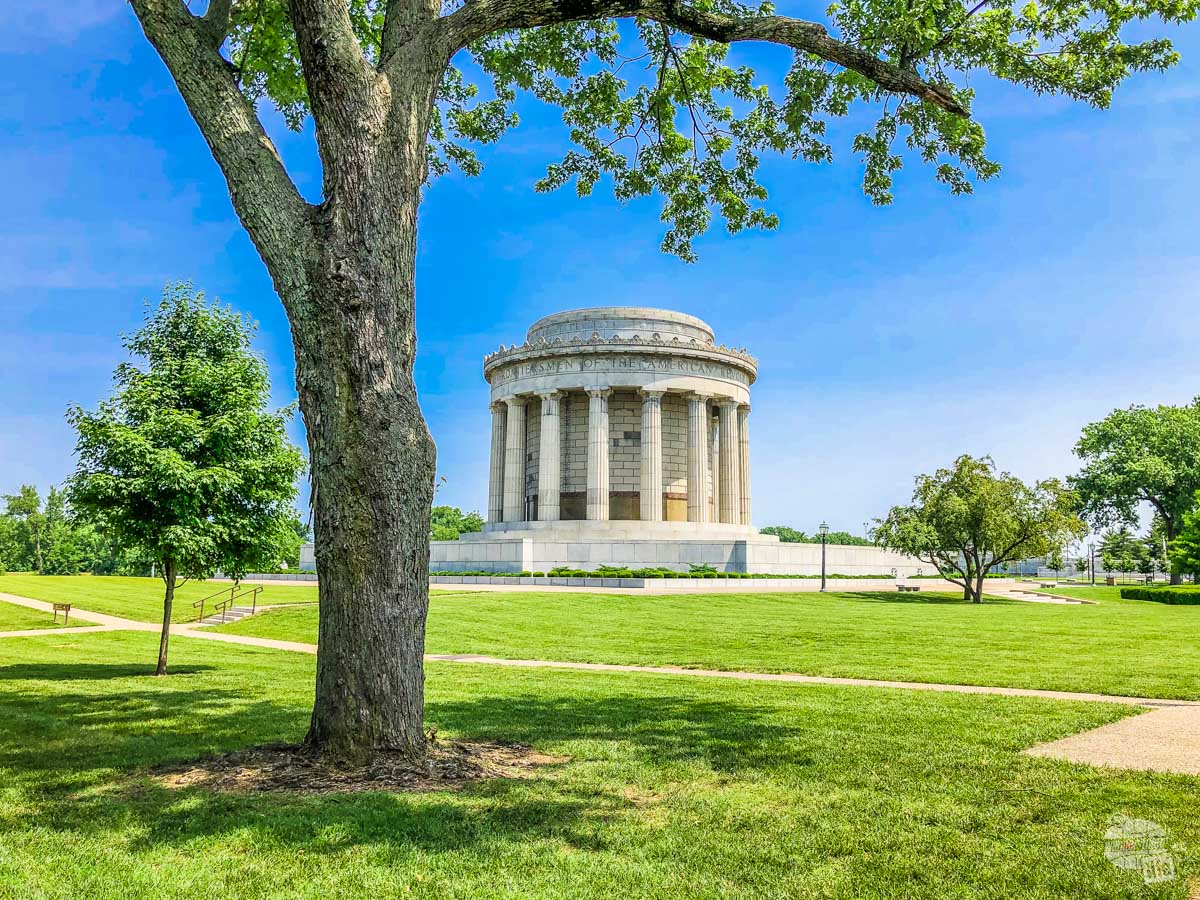
Clark’s journey through freezing floodwaters during the winter of 1779 is incredible. He and his Army marked through freezing water for days in an effort to surprise the British. Thankfully, his efforts were worth it and the fort was seized for the United States.
At the park you’ll find a visitor center with a very small exhibit area and a 30-minute film. Be sure to watch the film as you’ve likely never heard of Clark and his remarkable victory that nearly doubled the size of the United States! Seriously, if it weren’t for Clark and his incredible journey, much of the midwest might have ended up as part of Canada.
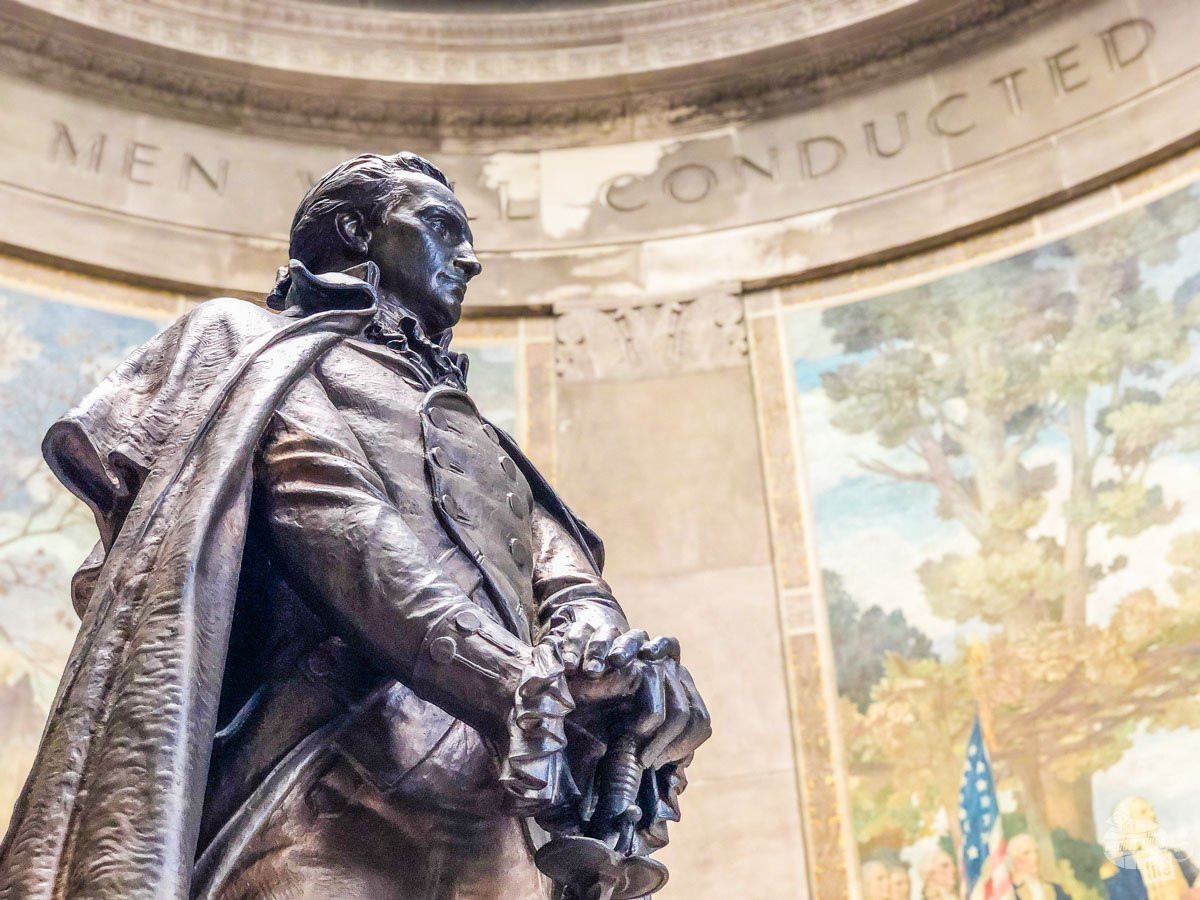
There is also an impressive memorial located where Fort Sackville once stood. Designed by Frederick Hirons, the Greek style memorial consists of 16 columns supporting a round roof. Inside the memorial is a bronze state of George Rogers Clark along with seven murals depicting Clark’s story.
We spent about an hour watching the video, walking the grounds and touring the memorial.
Side Trip: Grouseland, Home of President William Henry Harrison
While it is not operated by the National Park Service, we felt this National Historic Landmark was worthy of a visit and a mention among the Indiana National Parks sites. Grouseland is located in Vincennes, just a few blocks from the George Rogers Clark NHP. It was the home of William Henry Harrison and his family while he served as the first Governor of Indiana. Harrison named the house after the abundance of grouse found in the area.
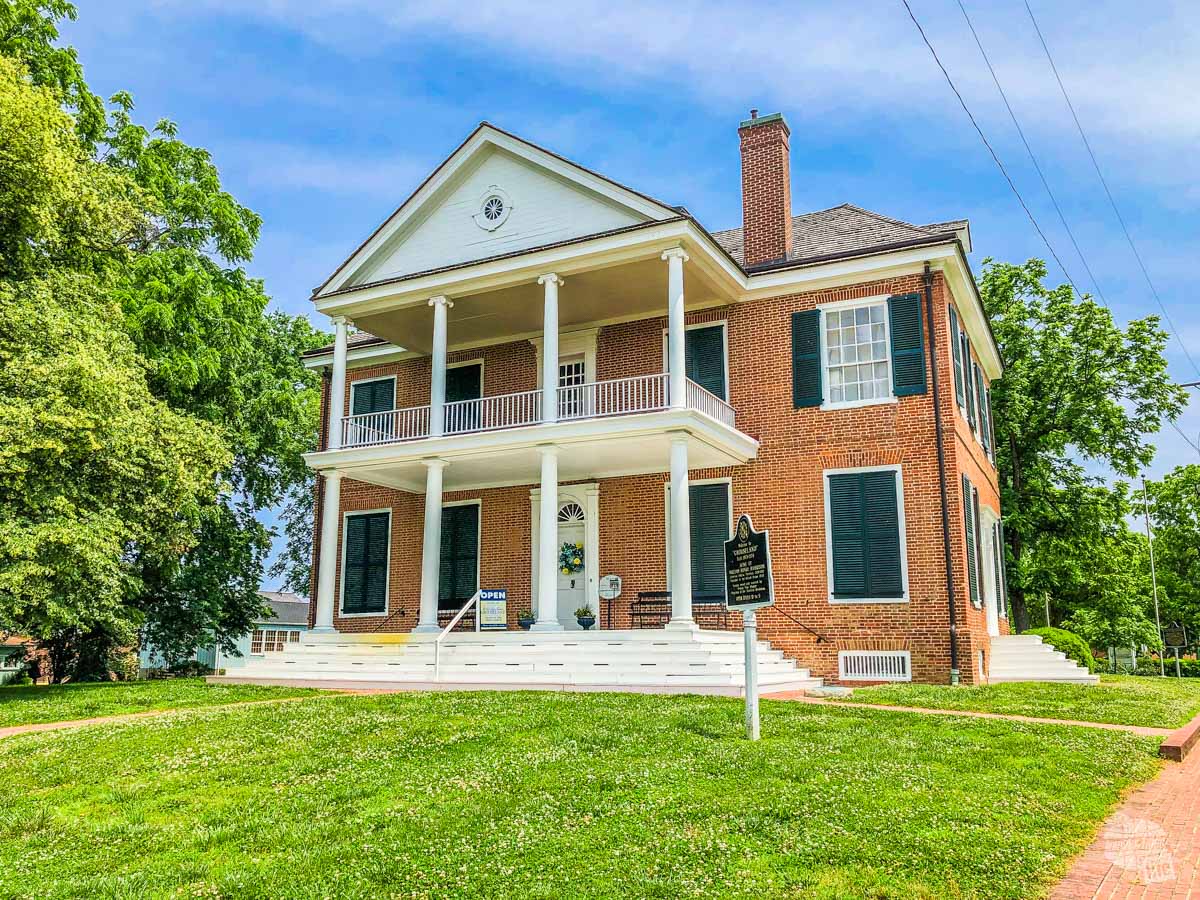
The house itself is quite impressive. When it was built, in 1802, it was the first brick home in the Indiana Territory. Indeed, Grouseland resembled the stately homes of Virginia, where Harrison grew up, and was in stark contrast to the small cabins of the frontier.
Due to the unrest between the natives and settlers, Grouseland was built as a fortress, with outside walls 3 bricks thick and double shutters. Inside was a powder magazine and a fresh-water well. The Harrisons invited anyone who needed shelter to stay with them in their safe haven.
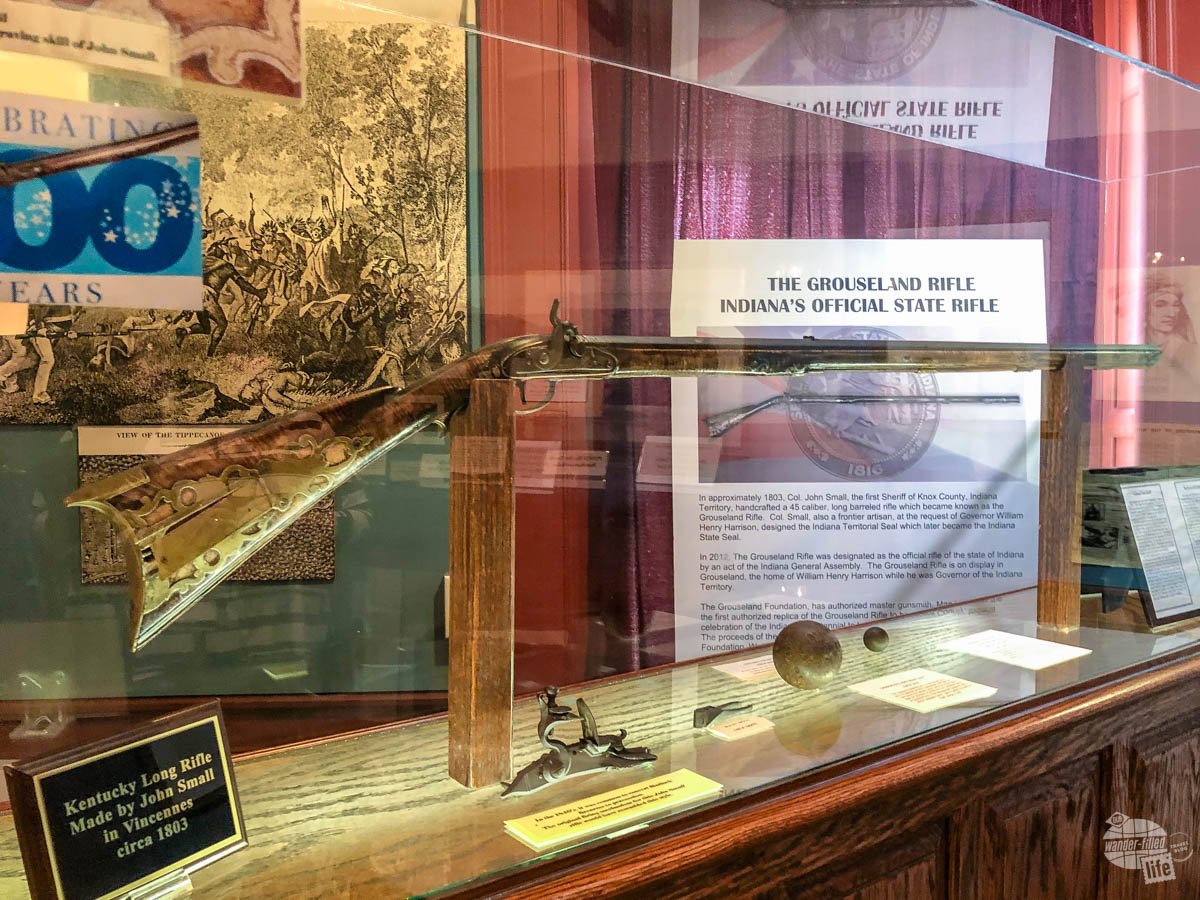
The Grouseland Foundation provides tours of the house without any set schedule. Inside the house you’ll find authentic furnishings from the period, along with memorabilia from Harrison’s Presidential campaign.
Side Trip: Lincoln Boyhood National Memorial
Located in Southern Indiana, the Lincoln Boyhood National Memorial is one of several National Parks sites dedicated to President Abraham Lincoln. This particular site is a memorial to his formative years, as he lived here from the age of 7 until the family moved to Illinois when Lincoln was 21. The site memorializes and tells the story of the future president, his family and their rustic life in this new frontier in the early-1800s.
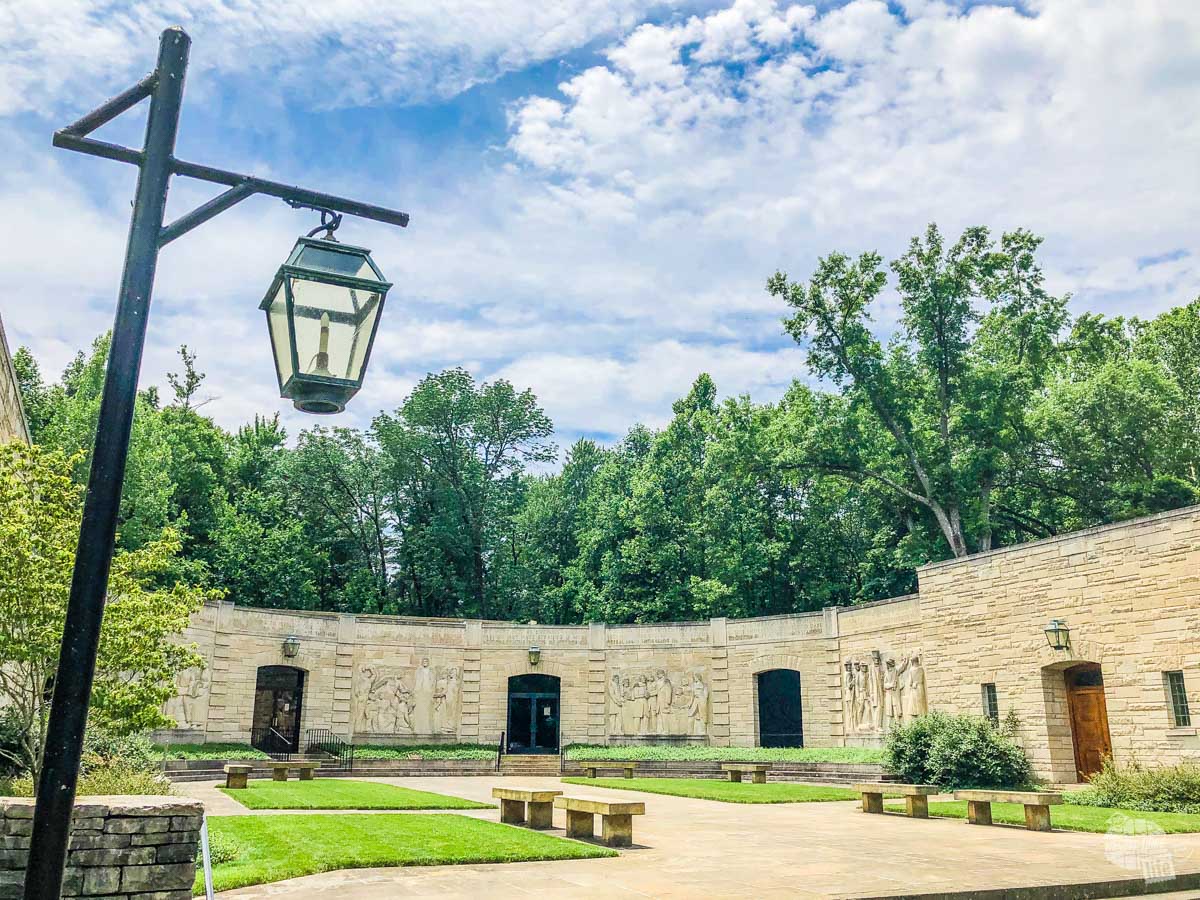
Additional sites dedicated to Abraham Lincoln include the Abraham Lincoln Birthplace National Historical Park in Kentucky and the Lincoln Home National Historic Site in Illinois. Of course, there is also the Lincoln Memorial National Memorial in Washington, DC. Finally, don’t forget that Lincoln is one of the four presidents memorialized at Mount Rushmore National Memorial in South Dakota.
Things to Do at Lincoln Boyhood NM
The Lincoln Boyhood National Memorial consists of a Memorial Visitor Center, a Living Historical Farm and several walking trails. You should definitely start your visit at the Memorial Visitor Center, where you can view the park’s 15-minute introductory film and walk through a small exhibit on Lincoln in Indiana. At each end of the U-shaped Visitor Center building are mixed-use memorial halls, one dedicated to President Lincoln, the other to his mother, Nancy Hanks Lincoln.
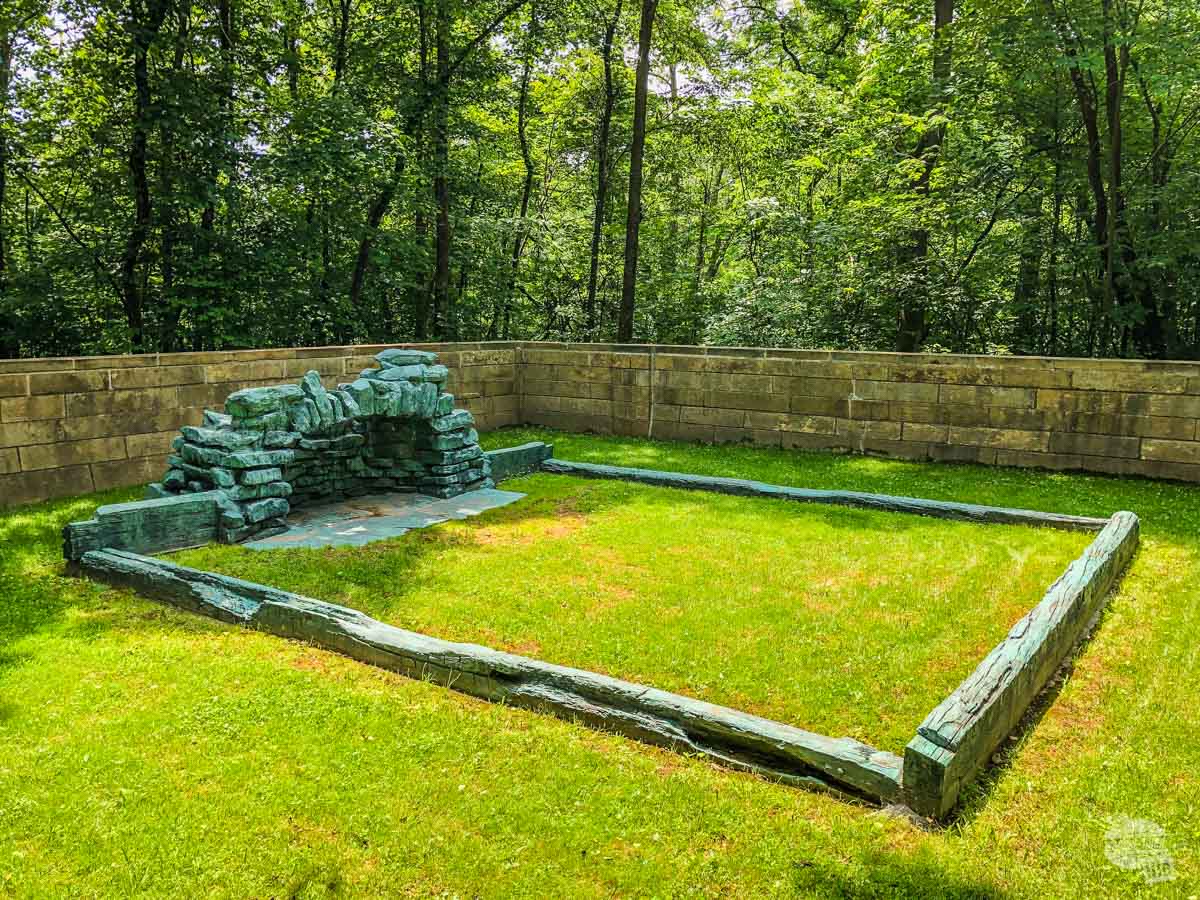
From the Visitor Center, you can walk a 1/2-mile trail to the Living Historical Farm and the nearby Cabin Site Memorial. The farm is a recreation of what a typical farm would have looked like when Lincoln lived here. Park Service employees demonstrate farm life with historic crops, tools and techniques. At the cabin site, you’ll find a bronze casting marking the foundation of the Lincoln cabin.
You can turn the hike into a loop by walking the Trail of Twelve Stones. Along this trail you’ll find markers with stones from important locations throughout Lincoln’s life. We found some of the stones to be a bit random (a stone from the building where Lincoln first saw a printing press), while others were a bit more meaningful (a rock from where he gave the Gettysburg Address).

From the Visitor Center, the loop to the farm and back on the Trail of Twelve Stones is about a mile and a fairly easy walk. If you are looking for a bit more exercise, you can add on the Lincoln Boyhood Nature Trail. This one-mile loop trail branches off from the Trail of Twelve Stones at the end opposite the Visitor Center.
For those with limited mobility, there is a parking area near the Cabin Site Memorial, but getting to the farm will still require a short, but easy, walk.
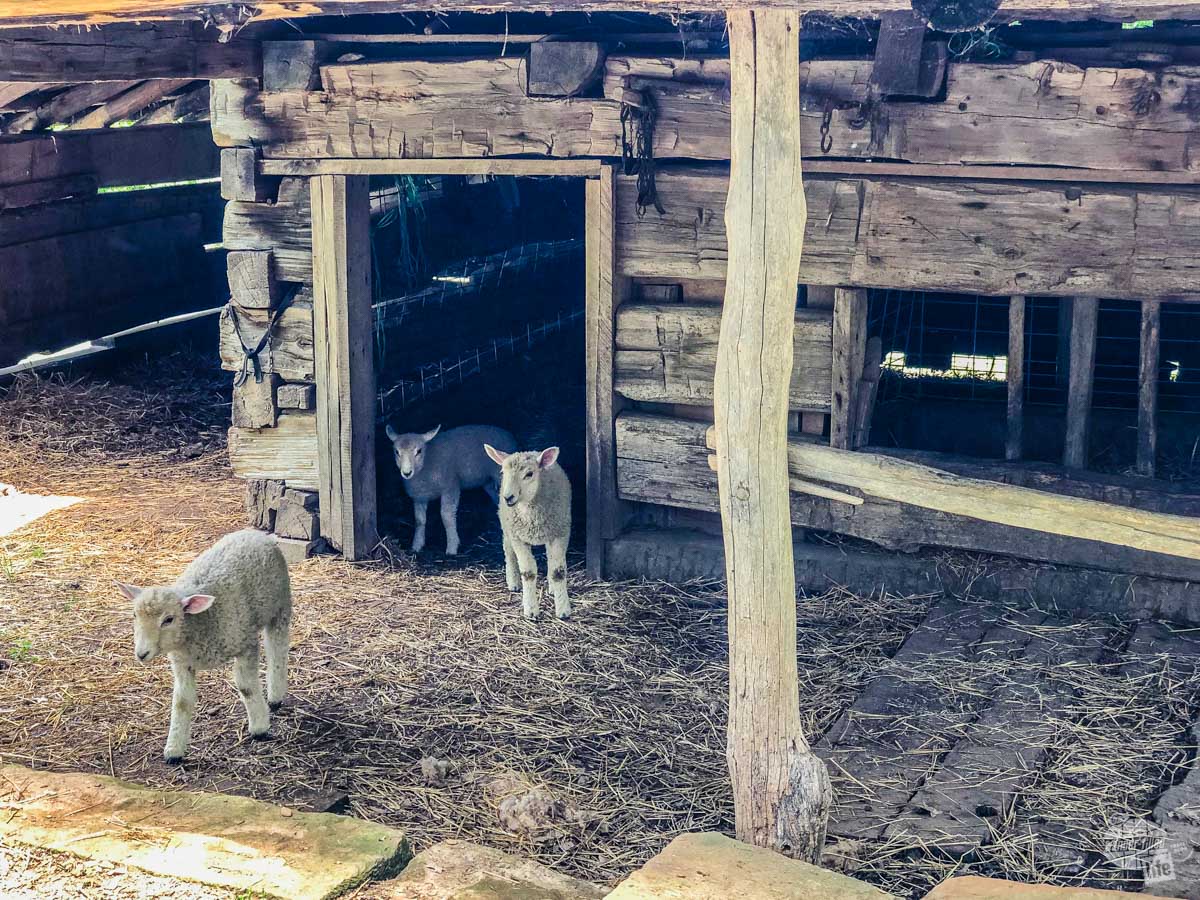
We spent about two hours visiting the Lincoln Boyhood NM.
Where to Stay
Lincoln Boyhood NM and George Rogers Clark NHP are located in southern Indiana, just a little over an hour’s drive from each other. You can easily visit both sites in one day from several cities in southwest Indiana. We stayed at the campground at Lincoln State Park. Vincennes would make a good base for anyone staying in a hotel.
Lincoln State Park
We camped at Lincoln State Park for three nights while visiting Lincoln Boyhood National Memorial and George Rogers Clark National Historical Park. The state park is located right across the street from the National Memorial and a little over an hour from Vincennes.
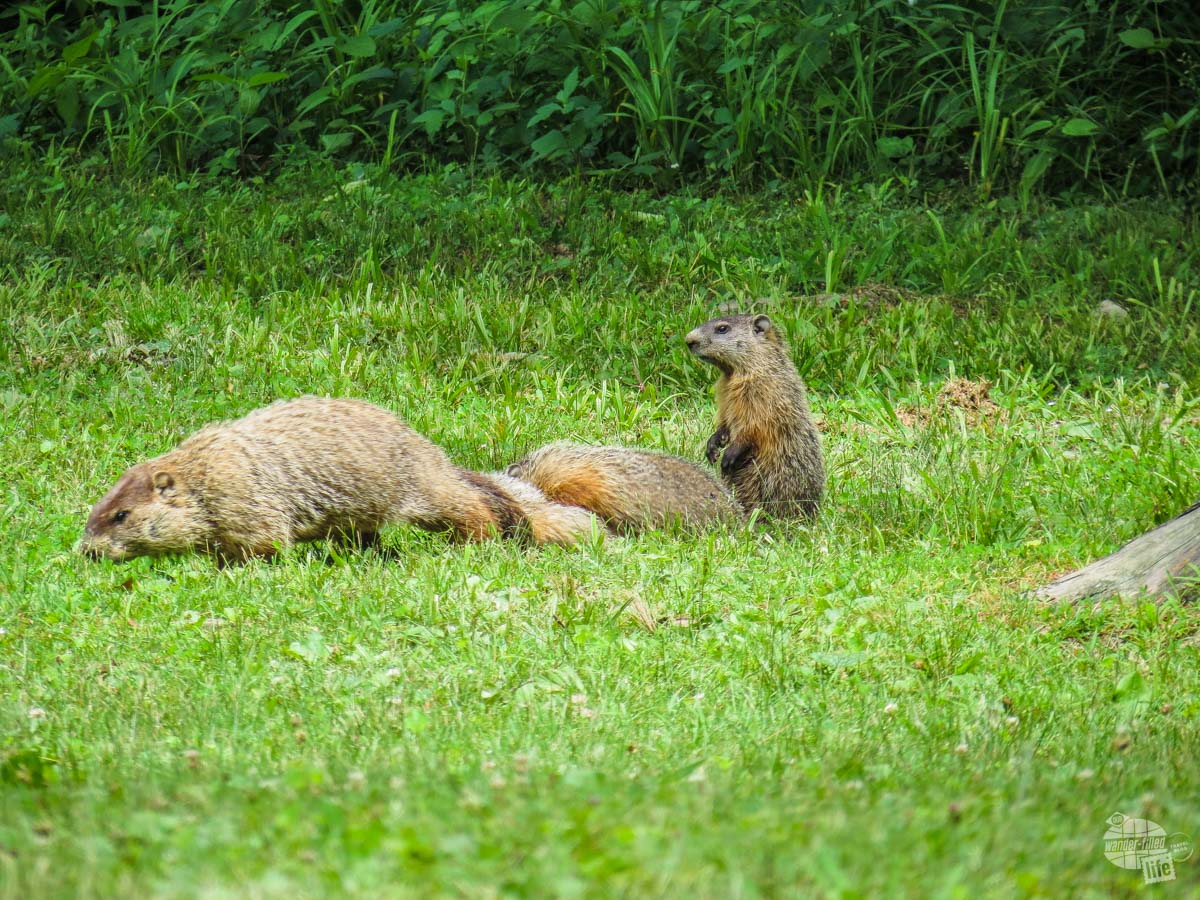
It is obvious that Lincoln State Park is a favorite weekend spot. Like other Indiana state parks, check-out/check-in time on Sunday is 5 p.m. This is definitely something to consider if you are arriving on a Sunday! Thankfully, our site was empty and available when we checked in around 3 p.m. All other days check-out/check-in is a very reasonable 2 p.m.
The sites are well-spaced and most have a decent amount of shade. The downside is that many of the sites are not level at all. In fact, this was likely the most unleveled site that we have ever camped in.
All sites in the “Electrical Loop” do have both electric (some 50 amp; some 30 amp) and water. I will warn you, though, the water faucets are placed in odd locations and it is quite possible that you’ll need a longer-than-average water hose.
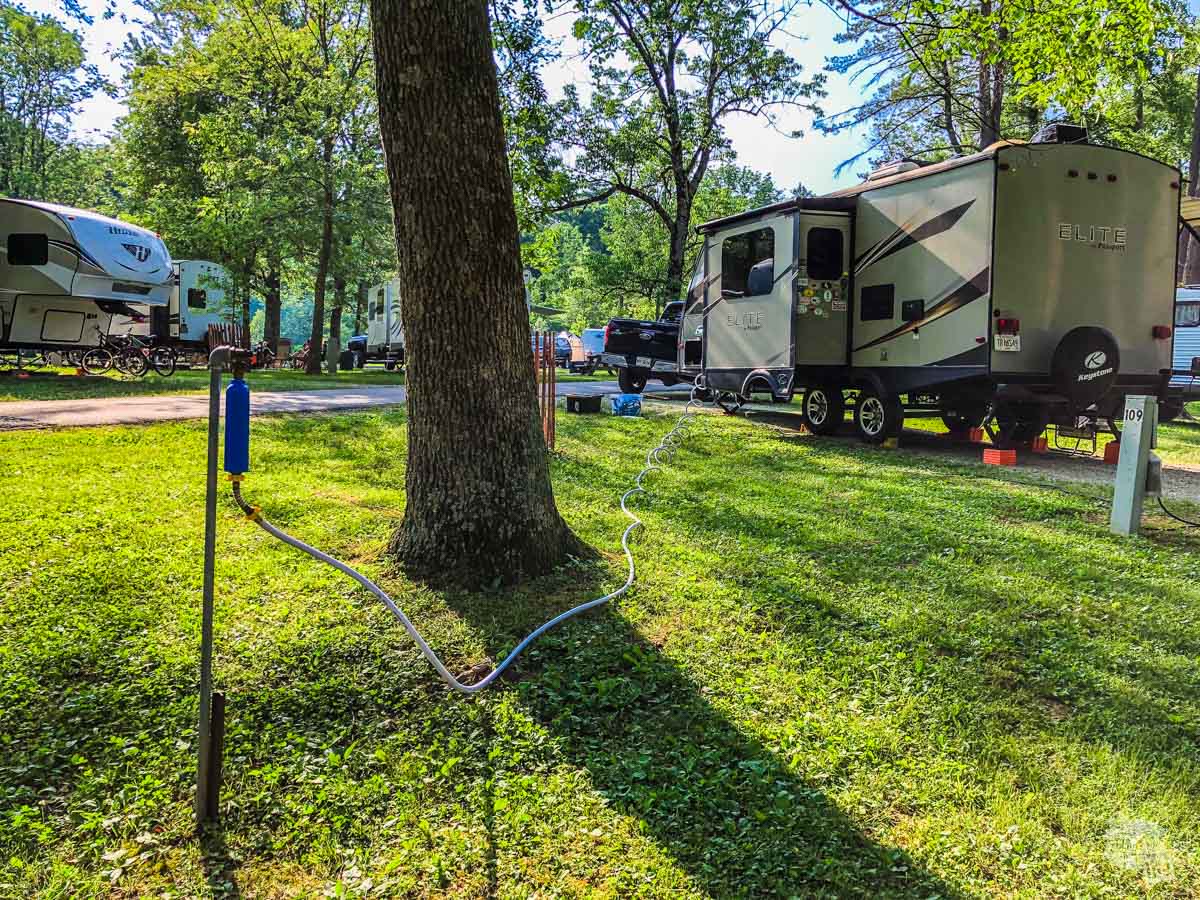
Leveling and water spigot issues aside, we did enjoy our stay at Lincoln State Park. We really enjoyed being able to walk to the Lincoln Boyhood NM (right at a mile along a well-maintained trail). The state park also has several walking trails and a lake.
We actually had to make a run to Walmart to get a longer hose. Our primary hose probably would have worked if the site had been more level. As it was, where we parked to get everything level was too far from the water spigot.
Final Thoughts on the Indiana National Parks
We really enjoyed our visit to the southern Indiana sites. I’ve got to the honest, though, we were underwhelmed by Indiana Dunes National Park. We did enjoy the dunes and the Cowles Bog Trail was a great trail. Unfortunately, the surrounding industrialization really distracted from the natural beauty.
I’ll also admit the mostly cloudy, sometimes rainy and cold weather we had didn’t help either. Still, sunny skies would not have removed the steel mills and power plants. And that’s just not what I want to see when I’m in a National Park.
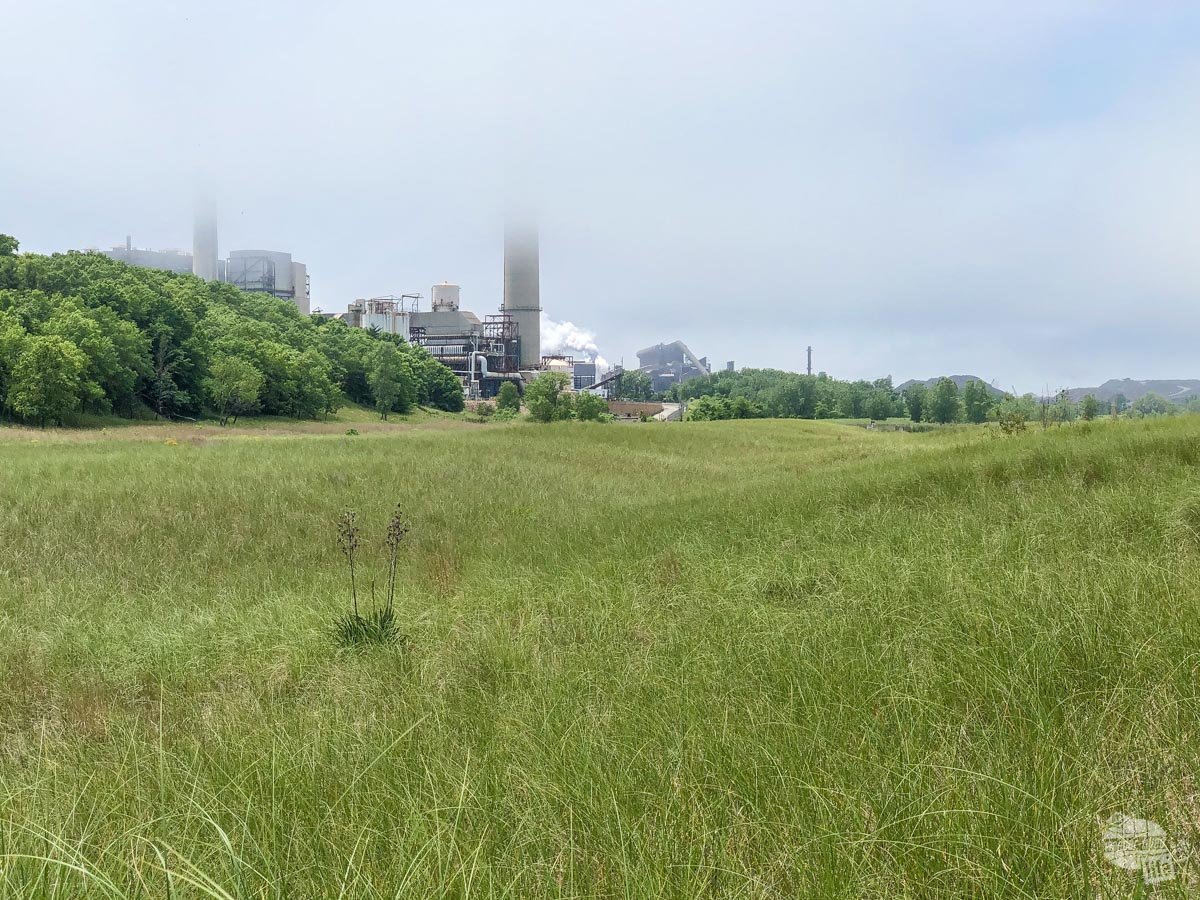
Before our visit to Cuyahoga Valley NP, we knew to expect an urban (i.e. non-traditional) park. And we had heard the cries that Cuyahoga Valley NP doesn’t deserve National Park status. Going into our visit, we had not heard those same comments about Indiana Dunes NP. Perhaps that is because Indiana Dunes is such a new “National Park.” It will be interesting to see if the masses have the same feeling in terms of whether or not it truly deserves National Park status.
Regardless of the park designation, we enjoy visiting all the units within the National Park Service. Sometimes we are disappointed but other times we find some hidden gems. At the very least, the three Indiana National Parks took us all over a state neither of us had visited before and gave us at least a brief glimpse into its history.
Check out our full Great Lakes National Parks itinerary here.
Travel Resources
What do you use to find a flight?
We use Skyscanner to find deals on flights. Skyscanner has a great interface and compares tons of airlines for the best pricing and routing. That said, it does not always have every airline and some airlines will have better deals on their website. Still, Skyscanner is a great place to start.
Click here to search for a flight.
What do you use to find a hotel?
We typically stay at Hilton properties, so we use the Hilton website. You can find good Hilton Honors discounts or AAA discounts for a hotel there. We make great use of our free night certificates from our Hilton Honors American Express.
Click here to book a Hilton property.
If there are no Hilton properties available, we use TripAdvisor to read reviews and book the hotel. We find we can get the best price that way.
Click here to search for a hotel.
We recently partnered with Stay22 to add interactive maps to each of our destination posts. This will allow you to see a plethora of hotels and vacation rentals all in one responsive map of the area.
What if I need more space than I can get at a hotel?
We use Vrbo for the times when we have rented a cabin for a weekend getaway, like this cabin in Townsend, TN, or needed to rent a house for a large family vacation. We had a great experience with them in terms of refunding deposits when COVID hit and will continue to use them.
Click here to search for a vacation rental.
Who do you use for rental cars?
As a general rule, we book with Hertz for rental cars. We have had nothing but good experiences with them. Plus, we really like unlimited mileage and not worrying about crossing state lines. We have even rented from Hertz overseas in both Slovenia and Croatia.
Click here to book a rental car.
How about booking a cruise?
We have found some amazing prices for booking a cruise through Cruise Direct. We have saved a lot of money on our cruises compared to what we found elsewhere, making a last-minute Bahamas cruise even cheaper.
Click here to book a cruise.
What if I want to rent an RV?
We highly recommend Outdoorsy for RV rentals. We rented a camper van for a week to visit Rocky Mountain National Park for the elk rut and Custer State Park for the Buffalo Round-Up and had a blast. The program was easy to use and we really enjoyed the freedom of having a camper van for that trip.
Click here to rent an RV.
What do you use for booking tours?
We don’t often book tours. Typically, we like to do stuff on our own. That said, there are some experiences you can’t have any other way. So, when we do want to book a tour, we always check Viator first.
Click here to book a tour.
Do you use anything to get discounts on the road?
We make extensive use of both Good Sam and AAA on the road. Good Sam is normally regarded as a discount card for RVers at campgrounds and Camping World but anyone can use the 5 cents off a gallon at the pump at both Pilot and Flying J.
Click here to get a Good Sam membership.
We have had AAA as long as we have been married and it has more than paid for itself in discounts at hotels, aside from the peace of mind of having roadside assistance. Add in paper maps and the ability to get an international driver’s license and it is more than worth it for any traveler out there.
Click here to get a AAA membership.
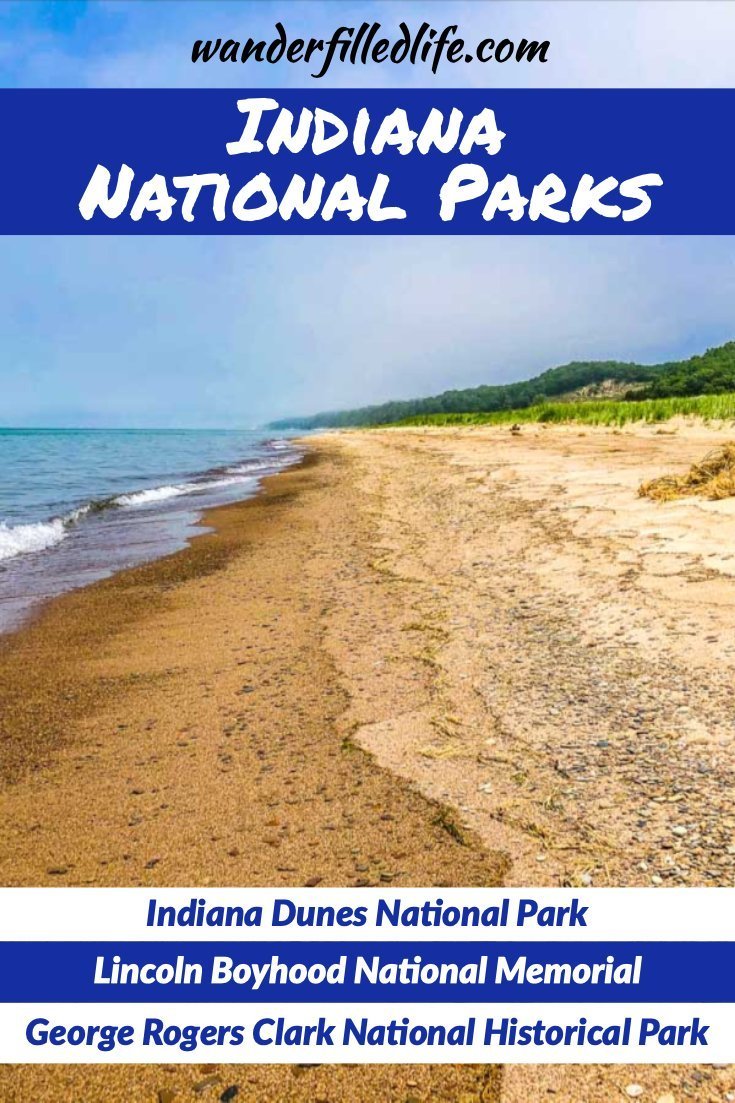

Which camera did you use to take these beautiful pictures?
Thanks!
Hi Rick!
We used a variety of cameras, depending on the situation. Many of the shots were taken with our iPhones. Some were taken with a Canon EOS 7D MkII, some were taken with a Canon SX40HS.Be sure to check out our article on what I keep in my camera bag here: https://www.wanderfilledlife.com/camera-gear/